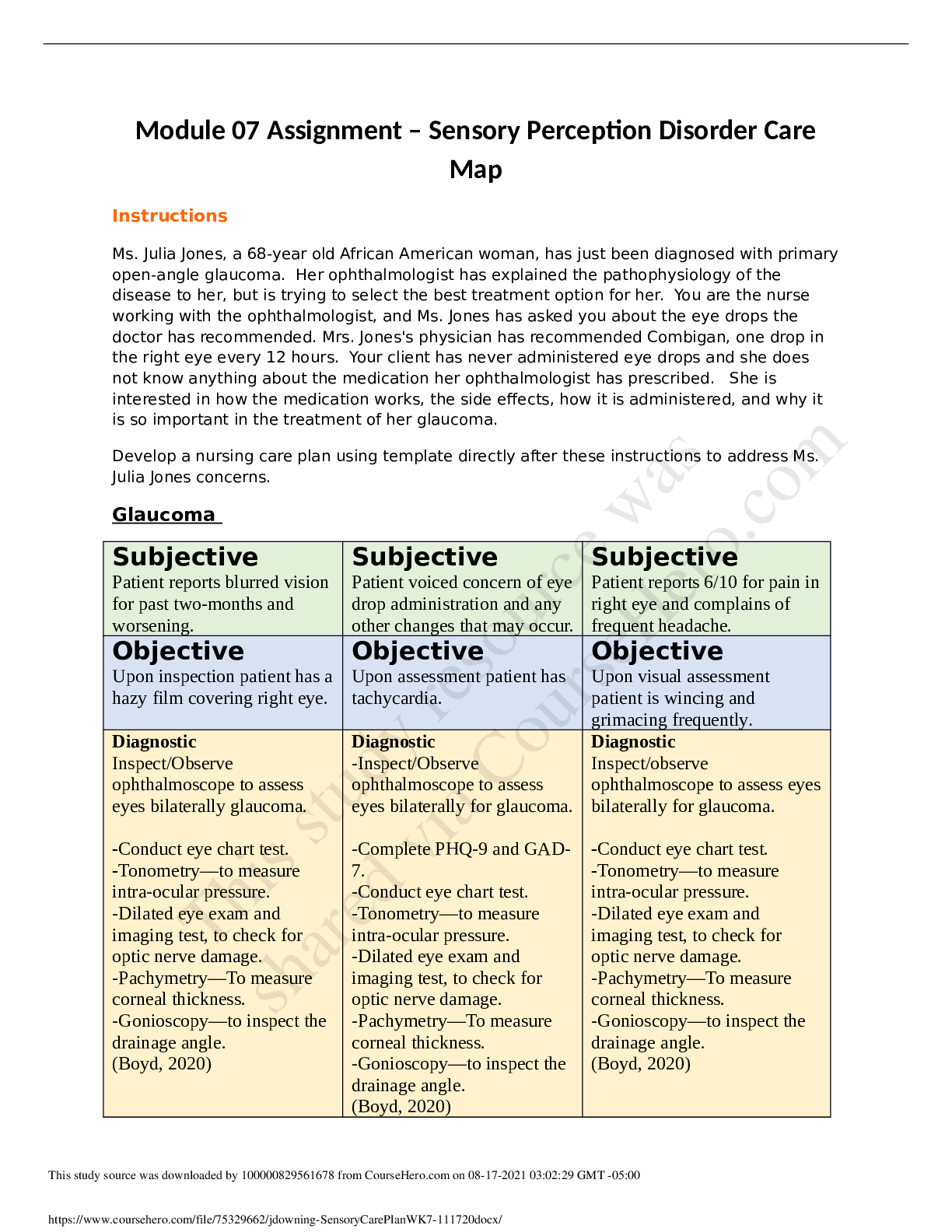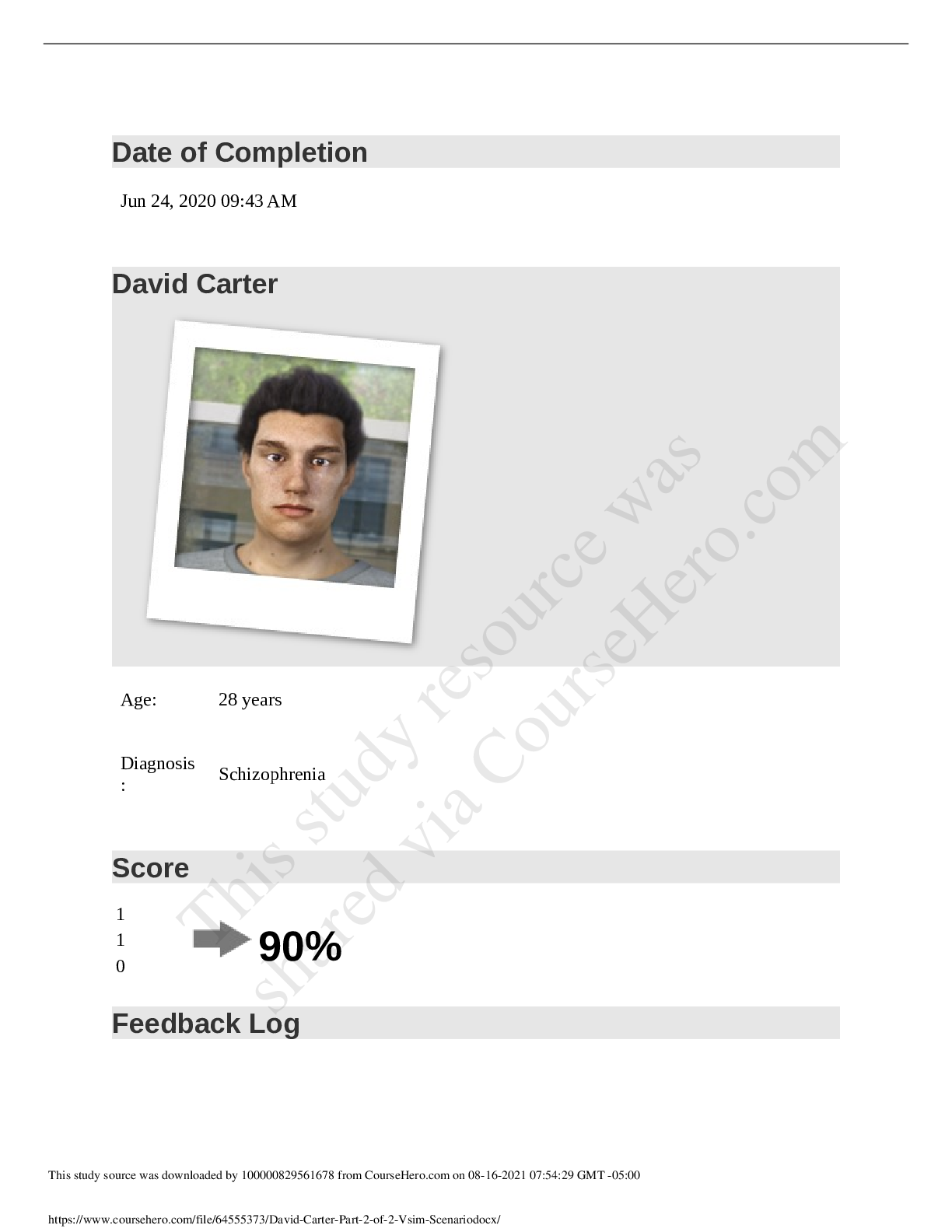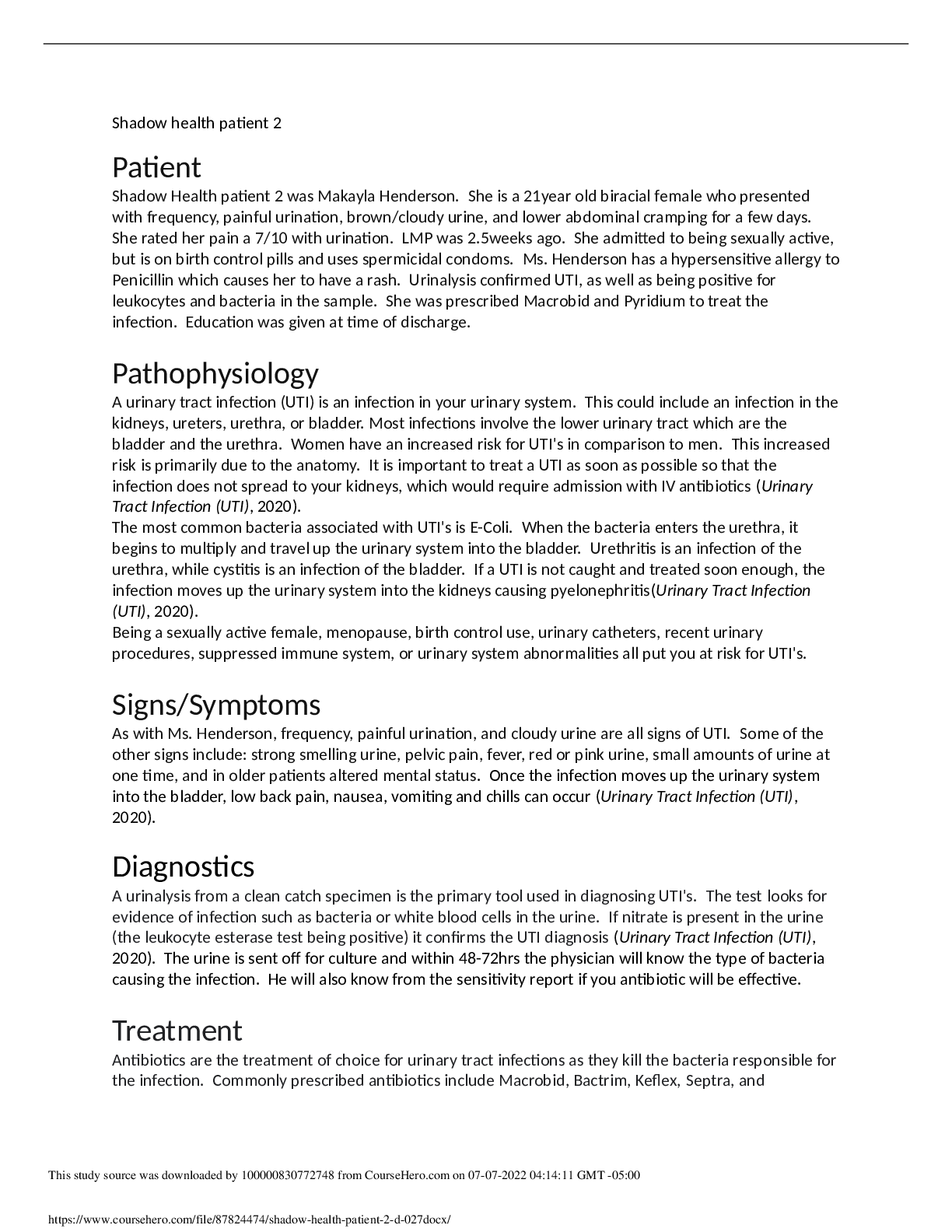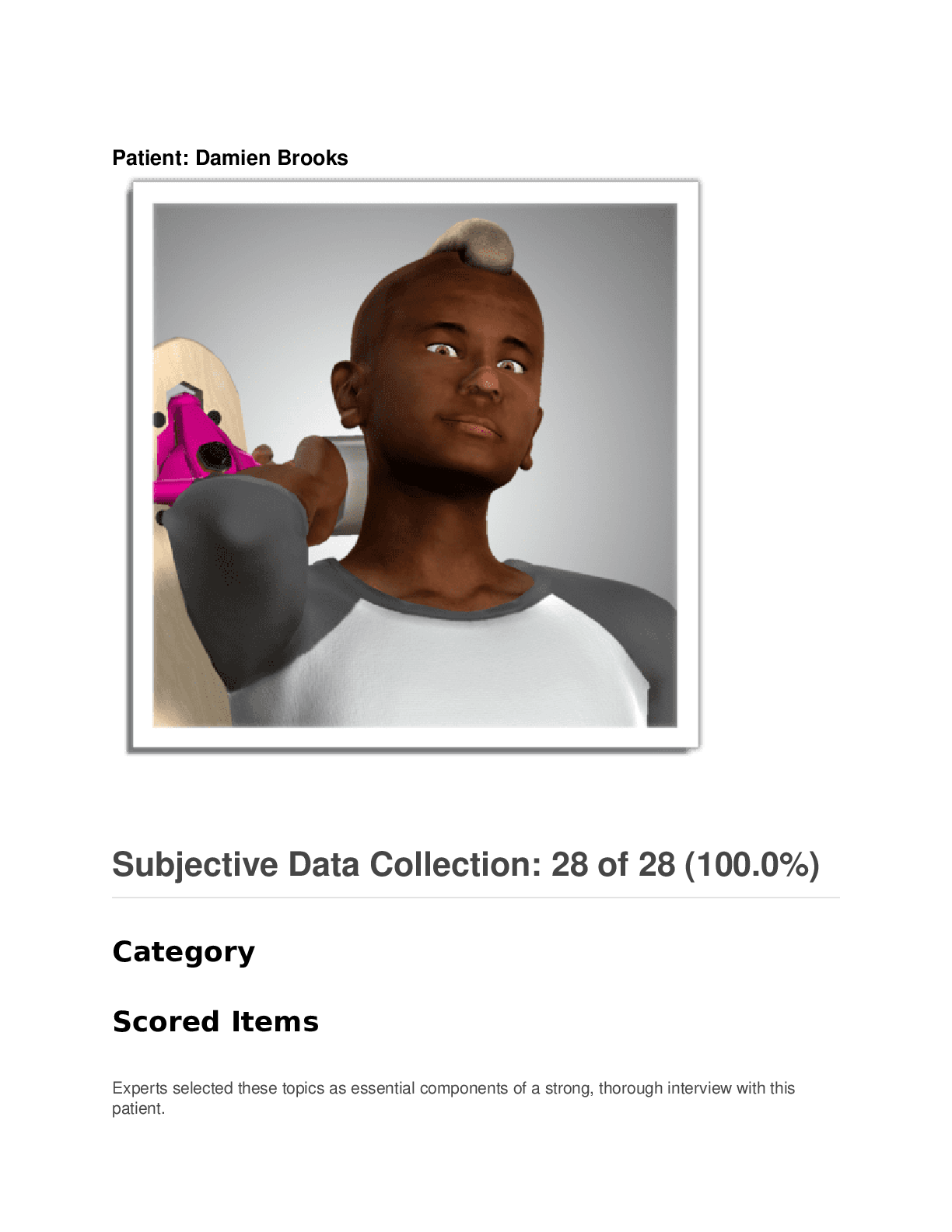Health Care > CASE STUDY > Module 07 Assignment – Sensory Perception Disorder Care Map (All)
Module 07 Assignment – Sensory Perception Disorder Care Map
Document Content and Description Below
Ms. Julia Jones, a 68-year old African American woman, has just been diagnosed with primary open-angle glaucoma. Her ophthalmologist has explained the pathophysiology of the disease to her, but is... trying to select the best treatment option for her. You are the nurse working with the ophthalmologist, and Ms. Jones has asked you about the eye drops the doctor has recommended. Mrs. Jones's physician has recommended Combigan, one drop in the right eye every 12 hours. Your client has never administered eye drops and she does not know anything about the medication her ophthalmologist has prescribed. She is interested in how the medication works, the side effects, how it is administered, and why it is so important in the treatment of her glaucoma. Develop a nursing care plan using template directly after these instructions to address Ms. Julia Jones concerns. Glaucoma Subjective Patient reports blurred vision for past two-months and worsening. Subjective Patient voiced concern of eye drop administration and any other changes that may occur. Subjective Patient reports 6/10 for pain in right eye and complains of frequent headache. Objective Objective Objective Upon inspection patient has a Upon assessment patient has Upon visual assessment hazy film covering right eye. tachycardia. patient is wincing and grimacing frequently. Diagnostic Inspect/Observe ophthalmoscope to assess eyes bilaterally glaucoma. -Conduct eye chart test. -Tonometry—to measure intra-ocular pressure. -Dilated eye exam and imaging test, to check for optic nerve damage. -Pachymetry—To measure corneal thickness. -Gonioscopy—to inspect the drainage angle. (Boyd, 2020) Diagnostic -Inspect/Observe ophthalmoscope to assess eyes bilaterally for glaucoma. -Complete PHQ-9 and GAD- 7. -Conduct eye chart test. -Tonometry—to measure intra-ocular pressure. -Dilated eye exam and imaging test, to check for optic nerve damage. -Pachymetry—To measure corneal thickness. -Gonioscopy—to inspect the drainage angle. (Boyd, 2020) Diagnostic Inspect/observe ophthalmoscope to assess eyes bilaterally for glaucoma. -Conduct eye chart test. -Tonometry—to measure intra-ocular pressure. -Dilated eye exam and imaging test, to check for optic nerve damage. -Pachymetry—To measure corneal thickness. -Gonioscopy—to inspect the drainage angle. (Boyd, 2020) Nursing Diagnosis Nursing Diagnosis Nursing Diagnosis Disturbed sensory perception due to altered sensory reception; altered status of sense organ as evidenced by progressive loss of vision field in right eye (Vera, 2019). Anxiety due to Physiological factors, change in health status; presence of pain; possibility/reality of loss of vision as evidenced by expressed concern regarding changes of life (Vera, 2019). Acute/Chronic pain due to an increase intraocular pressure of right eye as evidenced by blurred vision in right eye (Ackley, Ladwig, 2014). SMART Goal SMART Goal SMART Goal Client will maintain the current visual field/acuity for three months without further loss of vision upon recommending administering eye drops. (Vera, 2019). After one-week patient will appear relaxed and report anxiety is reduced to a manageable level (Vera, 2019). After three days of administering eye drops patient will report a decrease of pain lowered by at least three points. Nursing Interventions Nursing Interventions Nursing Interventions -Nurse will educate and demonstrate for patient on any oral treatment as well as eye drop administration (counting drops, adhering to the schedule, not missing doses). Rationale: -Controls increased intraocular pressure, preventing further loss of vision (Vera, 2019). - Recommend follow-up after treatment. Rationale: Some medications may not work or may have adverse reactions. Encourage follow-up after treatment to determine if the patient’s symptoms are improving, even if symptoms seem to subside, resolve, or -Identify helpful resources and people. Rationale: Provides reassurance to patient that they are not alone dealing with this issue (Vera, 2019). -Evaluate anxiety level, degree of pain experienced or onset of symptoms, and current knowledge of condition. Rationale: These factors affect the patient threat to self, potentiate the cycle of anxiety, and may interfere with medical attempts to control increased intraocular pressure (Vera, 2019). Give accurate, honest information. Discuss the -Assess the type, intensity, and location of pain. Use a pain scale. Rationale: To determine the level of any analgesic doses (Ackley, Ladwig, 2014). -Encourage relaxation techniques (Ackley, Ladwig, 2014). Rationale: Can help reduce pain and anxiety patient may be experiencing. -Have the patient rest in a dark room with the head of the bed elevated 30 degrees or a comfortable position. (Ackley, Ladwig, 2014). Rationale: Can help reduce pain or discomfort. [Show More]
Last updated: 2 years ago
Preview 1 out of 4 pages

Buy this document to get the full access instantly
Instant Download Access after purchase
Buy NowInstant download
We Accept:

Reviews( 0 )
$9.00
Can't find what you want? Try our AI powered Search
Document information
Connected school, study & course
About the document
Uploaded On
Aug 17, 2021
Number of pages
4
Written in
Additional information
This document has been written for:
Uploaded
Aug 17, 2021
Downloads
0
Views
50














